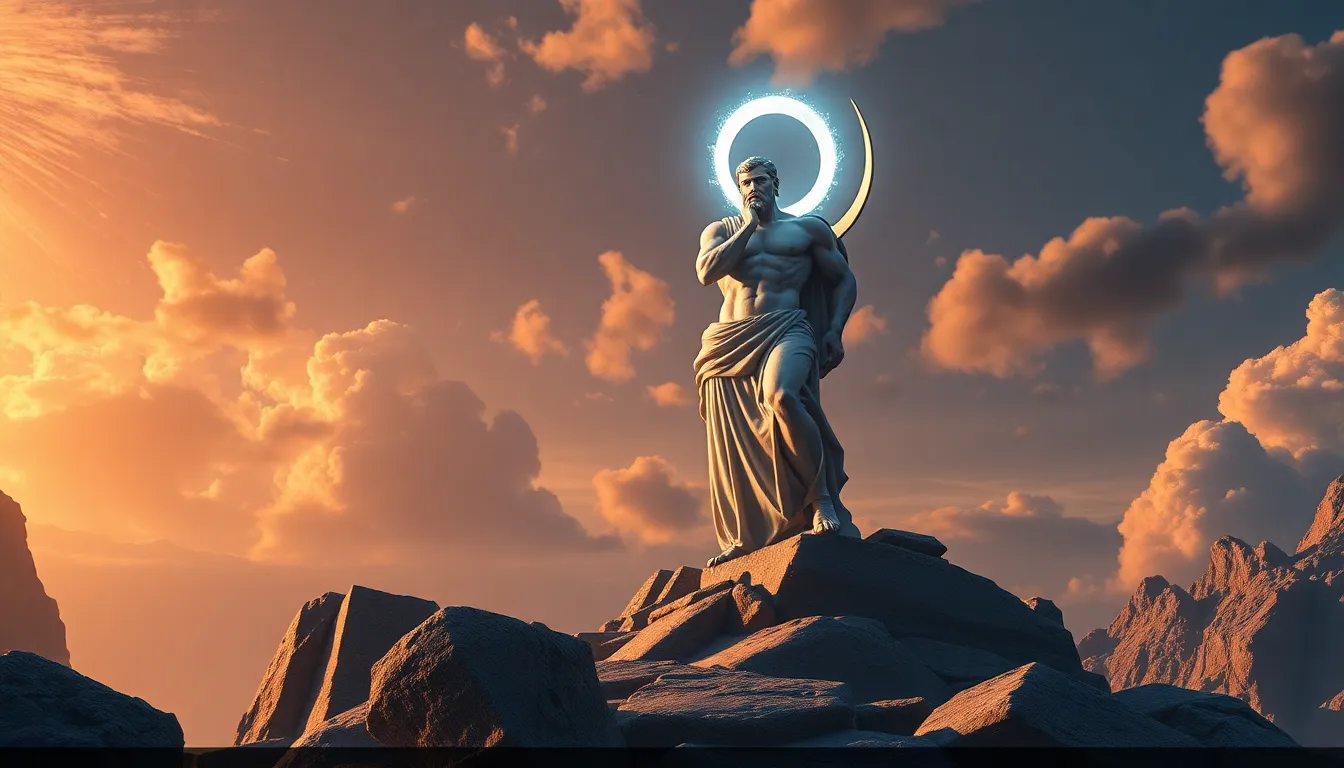Uranus: The Titan Who Gave Life to the Universe
I. Introduction
Uranus, the seventh planet from the Sun, is a fascinating and unique feature of our solar system. Known for its striking blue color and extreme tilt, Uranus is not only a gas giant but also a subject of intrigue in both science and mythology. In Greek mythology, Uranus is not merely a celestial body but a titan of creation, representing the heavens and playing a crucial role in the origin of the universe.
Understanding Uranus in its mythological context enriches our appreciation of its significance in the cosmos and the mysteries it holds. This article delves into the mythological background of Uranus, its physical characteristics, and its role within our solar system, alongside cultural representations that highlight its impact on human imagination.
II. The Mythological Background of Uranus
In Greek mythology, Uranus is one of the primordial deities, symbolizing the sky. He is often depicted as the father of the Titans and is intrinsically linked to Gaia, the Earth. Together, they represent the duality of creation—earth and sky united in the cosmic narrative.
The significance of Uranus in mythology is profound:
- Uranus represents the limitless nature of the universe.
- His relationship with Gaia signifies the interconnectedness of all creation.
- In many myths, Uranus is depicted as a force that gives life, illustrating the fertility and potential of the cosmos.
This symbolism positions Uranus as a central figure in understanding the origins of existence and the cosmos, where he is often viewed as a progenitor of divine beings and natural phenomena.
III. The Physical Characteristics of Uranus
Uranus is distinguished by several unique features that set it apart from other planets in our solar system:
- Size: Uranus is the third-largest planet, with a diameter of about 31,518 miles (50,724 kilometers).
- Color: The planet’s blue hue is due to methane in its atmosphere, which absorbs red light and reflects blue light.
- Atmosphere: Uranus has a dynamic atmosphere with high-speed winds and cloud bands, similar to other gas giants.
When compared to other gas giants like Jupiter and Saturn, Uranus stands out due to its unique tilt:
- Extreme Tilt: Uranus’s axial tilt is about 98 degrees, causing it to rotate on its side. This extreme tilt leads to unusual seasonal variations, with poles experiencing prolonged periods of sunlight and darkness.
IV. The Formation of Uranus and Its Role in the Solar System
The formation of Uranus remains a subject of scientific inquiry. The prevailing theories suggest that it formed from the same protoplanetary disk as other planets, accumulating gas and ice from the surrounding material.
Uranus plays a vital role in the gravitational dynamics of the solar system:
- Its massive size influences the orbits of other celestial bodies.
- Uranus’s formation may have played a role in the arrangement of the outer planets, affecting their paths and interactions.
This gravitational influence is essential for understanding the stability and evolution of the solar system, highlighting Uranus’s significance beyond its visual appeal.
V. The Moons of Uranus: A Complex Family
Uranus boasts a complex family of moons, each with unique characteristics:
- Titania: The largest moon, known for its varied terrain and potential for geological activity.
- Miranda: Notable for its dramatic cliffs and canyons, suggesting a tumultuous history.
- Ariel: Features bright terrains and is thought to have a subsurface ocean.
The potential for life on these moons is a topic of ongoing research. For example, if subsurface oceans exist, they could harbor the conditions necessary for life. The relationship between Uranus and its moons reflects the cosmic creation narrative, further emphasizing the interconnectedness of celestial bodies.
VI. Exploring Uranus: Past and Future Missions
Historically, Uranus has been explored by the Voyager 2 spacecraft, which provided the first close-up images of the planet and its moons in 1986. This mission revealed many of the features we now recognize, but there is still much to learn.
Upcoming missions are designed to deepen our understanding of Uranus:
- NASA and other space agencies are planning missions that will focus on atmospheric composition, magnetic fields, and potential for life.
- The technology advancements in space telescopes and orbiters aim to collect more data about Uranus and its moons.
These missions hold promise for uncovering the mysteries of Uranus and its role in the solar system.
VII. Uranus in Popular Culture and Science Fiction
Uranus has not only captivated scientists but also inspired artists and writers throughout history:
- In literature, Uranus has been referenced in various works, often symbolizing the unknown and the vastness of space.
- Films and television shows have depicted Uranus as a mysterious planet, contributing to the allure of space exploration.
The influence of Uranus on modern science fiction narratives has been significant, shaping our cultural perceptions of the universe and encouraging a broader interest in space exploration. These representations often provoke curiosity and imagination, leading to increased scientific inquiry.
VIII. Conclusion
In conclusion, Uranus embodies the essence of a titan in the cosmic narrative—representing creation, mystery, and the interconnectedness of existence. Understanding Uranus’s mythological, physical, and cultural significance enhances our appreciation for this unique planet and its role in the universe.
As we continue to explore Uranus through missions and research, we may uncover revelations that not only inform us about our solar system but also about the very nature of life and existence in the cosmos. The journey into the depths of Uranus holds the potential for profound discoveries about the universe we inhabit.




